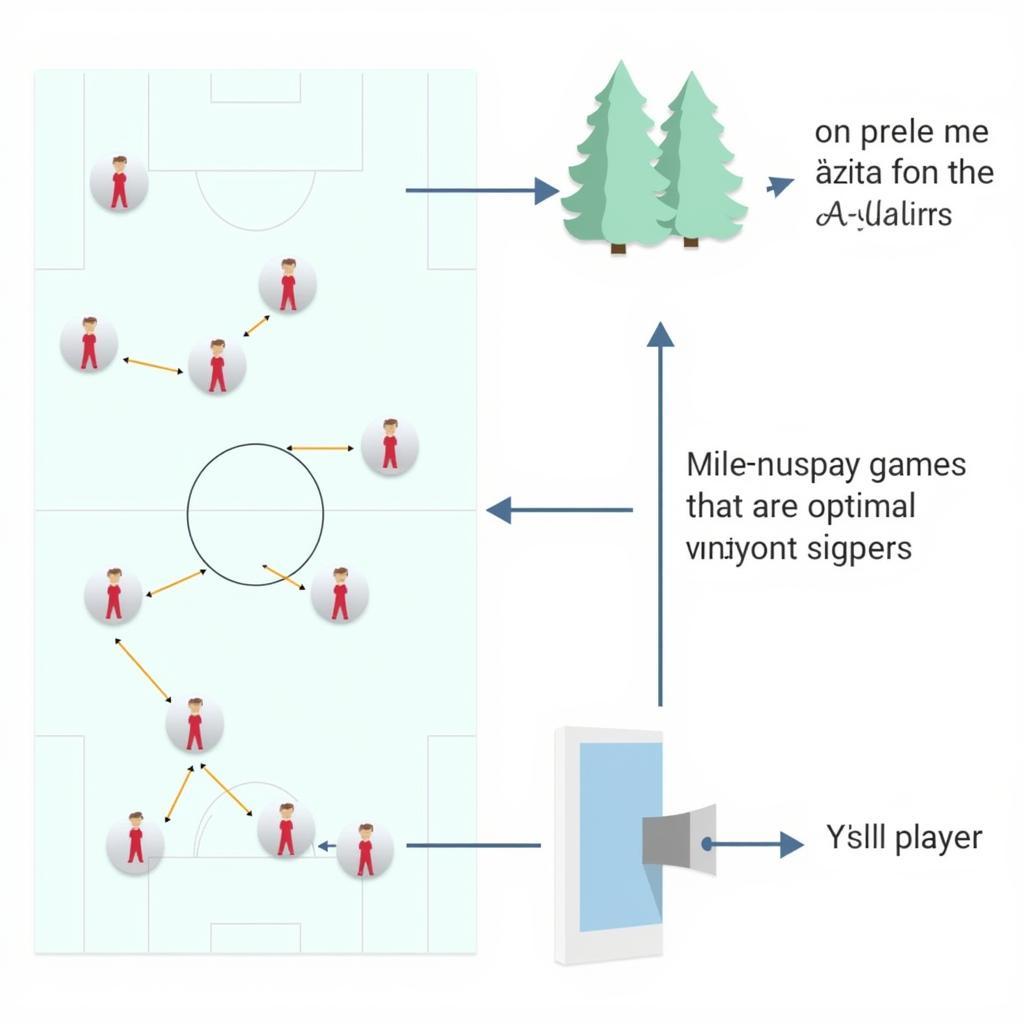Auto Player Switching: The Future of Football Tactics?
October 30, 2024Auto player switching, the concept of dynamically changing player positions during a match based on real-time game analysis, is becoming a hot topic in football strategy. It promises to revolutionize how we think about formations, player roles, and tactical adaptability. Imagine a team seamlessly transitioning from a 4-3-3 to a 3-5-2 mid-game, exploiting weaknesses in the opponent’s defense without any pause for substitutions or complex instructions from the manager. That’s the potential of auto player switching.
Understanding the Mechanics of Auto Player Switching
Auto player switching isn’t just about random position changes. It’s a complex system driven by data and algorithms. Imagine sensors tracking players’ positions, movement, and even physiological data like heart rate and fatigue. This information is then fed into a sophisticated AI system that analyzes the game state, identifies opportunities and weaknesses, and suggests optimal player positioning in real-time. Think of it as having a virtual assistant coach constantly analyzing the match and whispering tactical adjustments into the players’ ears. It’s about maximizing every player’s strengths and minimizing weaknesses, adapting to the flow of the game like a chameleon.
This system could take into account factors like the opponent’s formation, the location of the ball, and the individual player’s skill set. For example, if the opposition is overloading one flank, the system could automatically shift players to reinforce that area, creating a numerical advantage. Or, if a player is showing signs of fatigue, it could trigger a swap with a fresher teammate on the bench, maintaining optimal performance levels throughout the match.
 Auto Player Switching Diagram
Auto Player Switching Diagram
Tactical Advantages and Potential Challenges
The benefits of auto player switching are numerous. It allows for unparalleled tactical flexibility, enabling teams to react instantly to changing game dynamics. It can optimize player performance by ensuring that each player is in the best possible position to contribute. And it could even lead to new and innovative formations that we haven’t even imagined yet. Imagine a fluid system where players seamlessly switch roles based on the context of the game, creating unpredictable attacking patterns and a solid defensive wall. This could be particularly useful against teams that employ highly specialized defensive tactics.
However, there are also significant challenges to overcome. The technology is still in its early stages of development and requires substantial investment. There are concerns about the reliability of the AI and the potential for glitches or errors. And perhaps most importantly, there’s the question of whether auto player switching will take away from the human element of the game, the strategic thinking and intuition of the manager and the players.
 Tactical Advantages of Auto Player Switching
Tactical Advantages of Auto Player Switching
The Future of Auto Player Switching in Football
While auto player switching is not yet a reality in professional football, its potential is undeniable. As technology continues to advance, it’s likely that we’ll see more sophisticated systems emerge that could eventually transform the game. This isn’t just about improving tactical efficiency; it’s about unlocking a new level of strategic complexity and creating a more dynamic and exciting sport. It’s also important to consider the ethical and philosophical implications of using AI in football. Will it lead to a more predictable game, or will it unleash a new era of creativity and innovation?
Think of how [tên các cầu thủ ghép lại thành tên của messi] has dominated the game with his incredible skills and vision. Imagine how much more effective he could be with a system that constantly optimizes his positioning on the field. Auto player switching could be the key to unlocking even greater potential in players like Messi and myself.
 The Future of Auto Player Switching
The Future of Auto Player Switching
It’s intriguing to consider how auto-switching might interact with established attacking patterns like those explored in [xu hướng tấn công của cầu thủ fo3]. Could it amplify their effectiveness, or would it require a completely new approach to offensive play? These are the exciting questions that lie ahead as we explore the future of this technology.
In conclusion, auto player switching has the potential to revolutionize football tactics, offering unparalleled flexibility and optimization. While challenges remain, the future of this technology is bright, promising a more dynamic and strategically complex game. Auto player switching is not just about changing positions; it’s about changing the very nature of football.
FAQ
- What is auto player switching?
- How does auto player switching work?
- What are the benefits of auto player switching?
- What are the challenges of auto player switching?
- Will auto player switching replace human coaches?
- When will auto player switching be used in professional football?
- How will auto player switching affect the role of players?
For further information, please explore other articles on our website related to tactical innovations in football.
For any assistance, please contact us:
Phone: 0396443476
Email: [email protected]
Address: 23 Tháng 3, Đắk Nia, Gia Nghĩa, Đắk Nông, Việt Nam. We have a 24/7 customer service team.